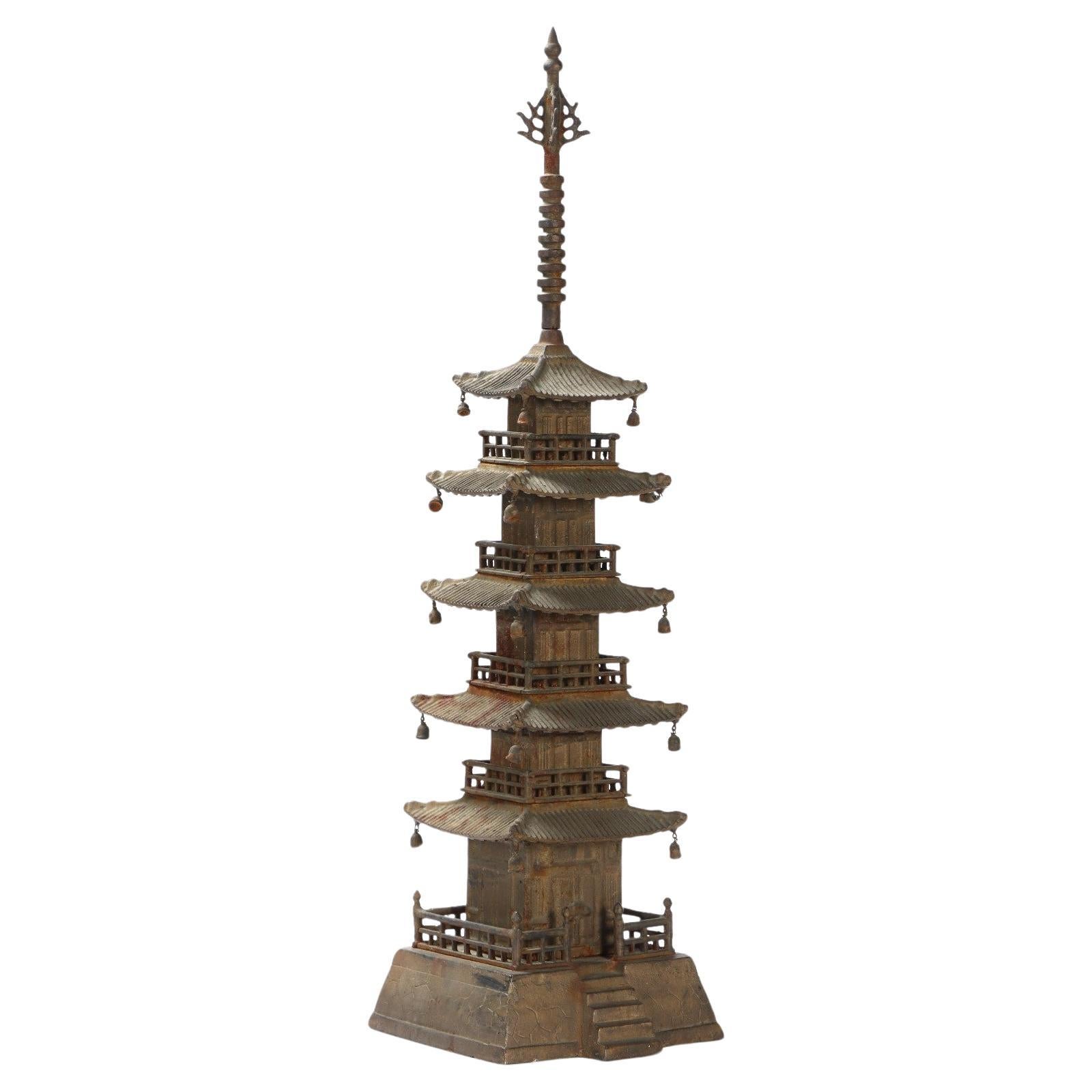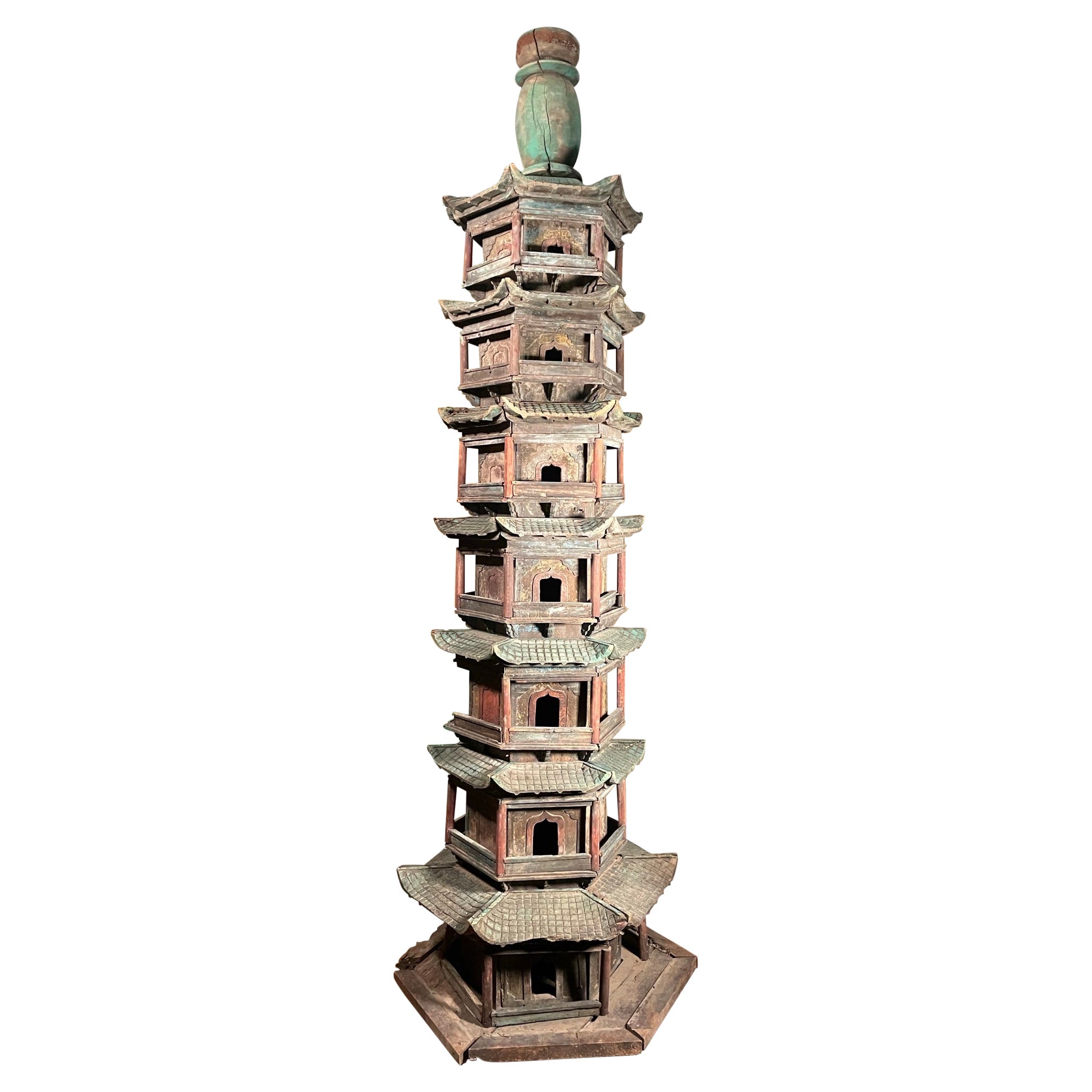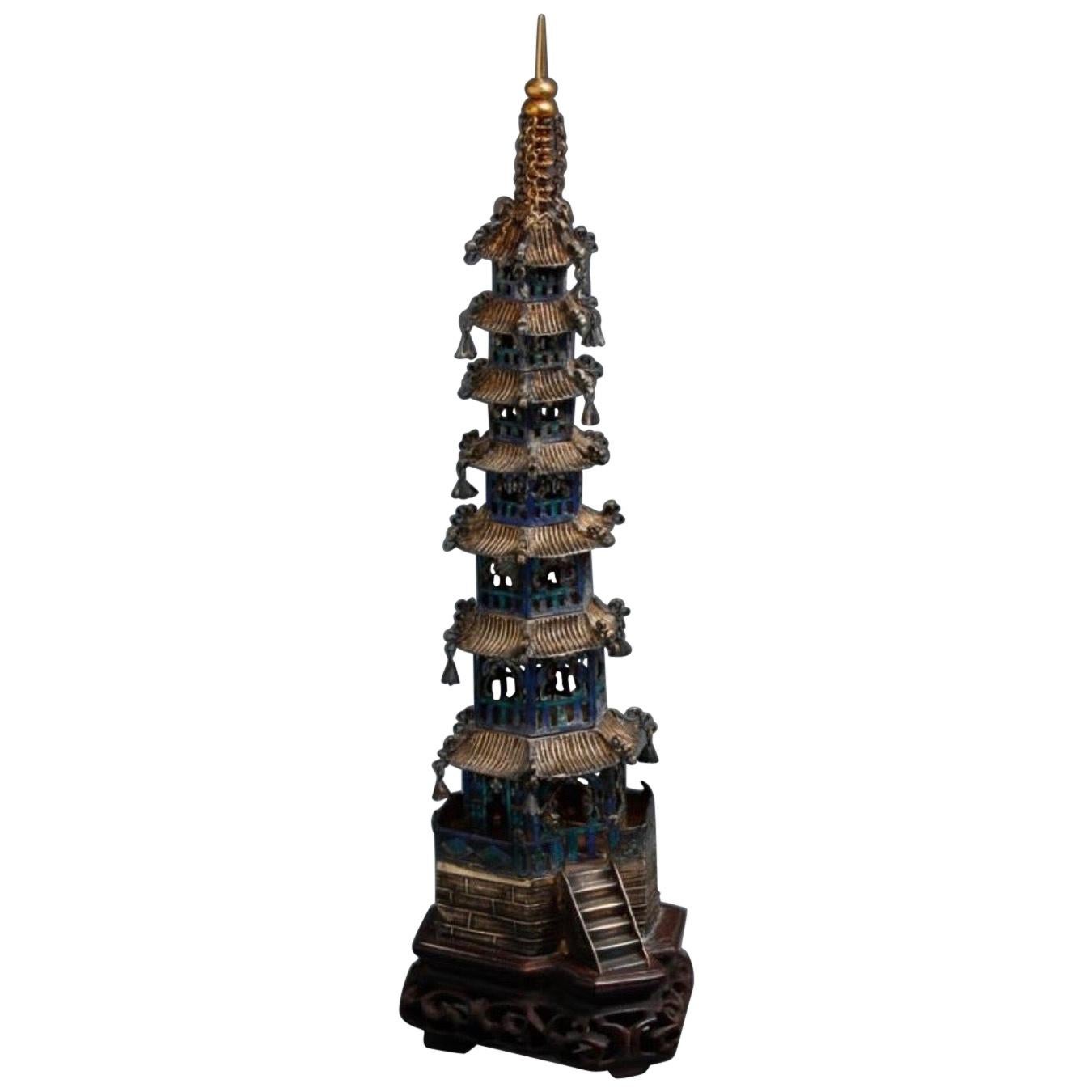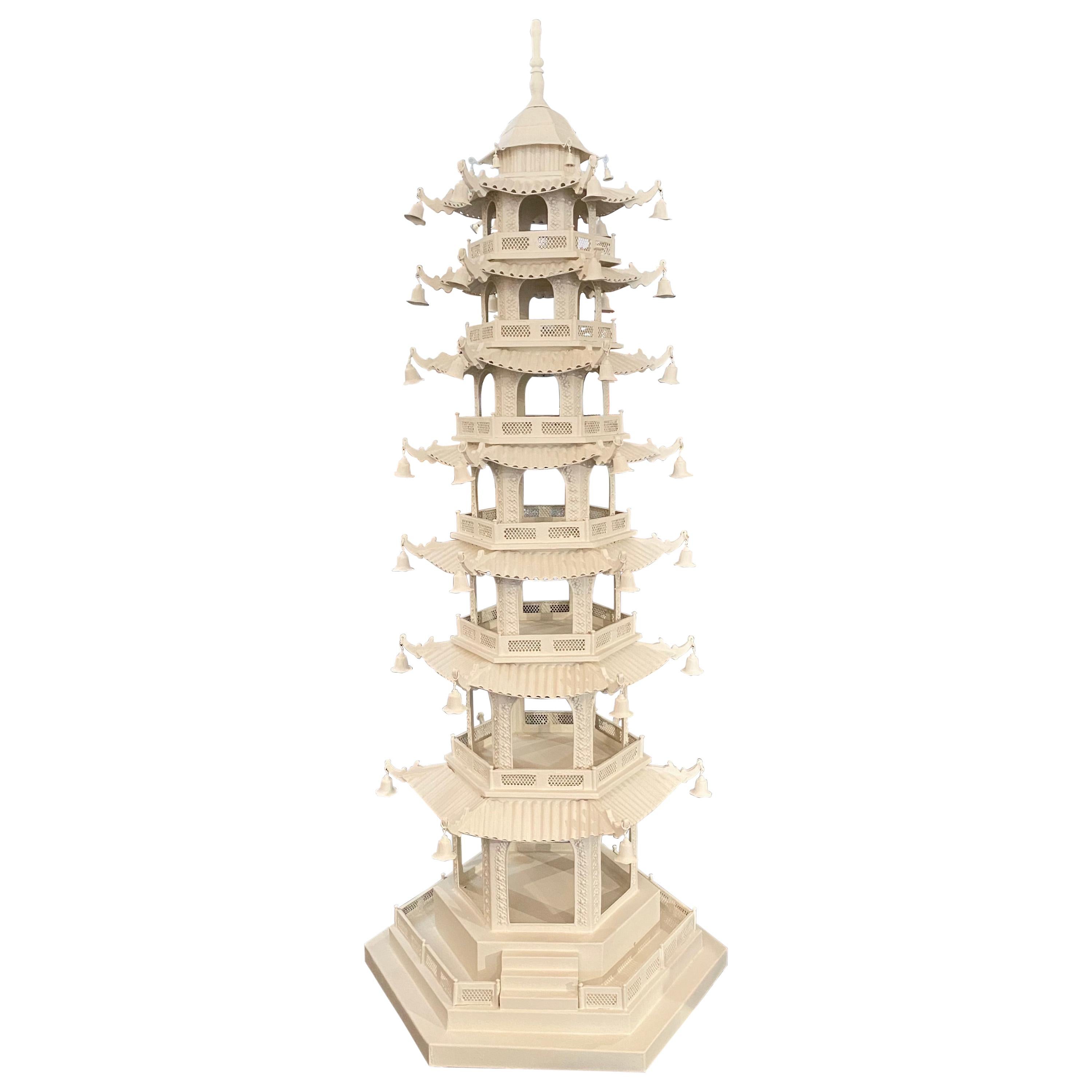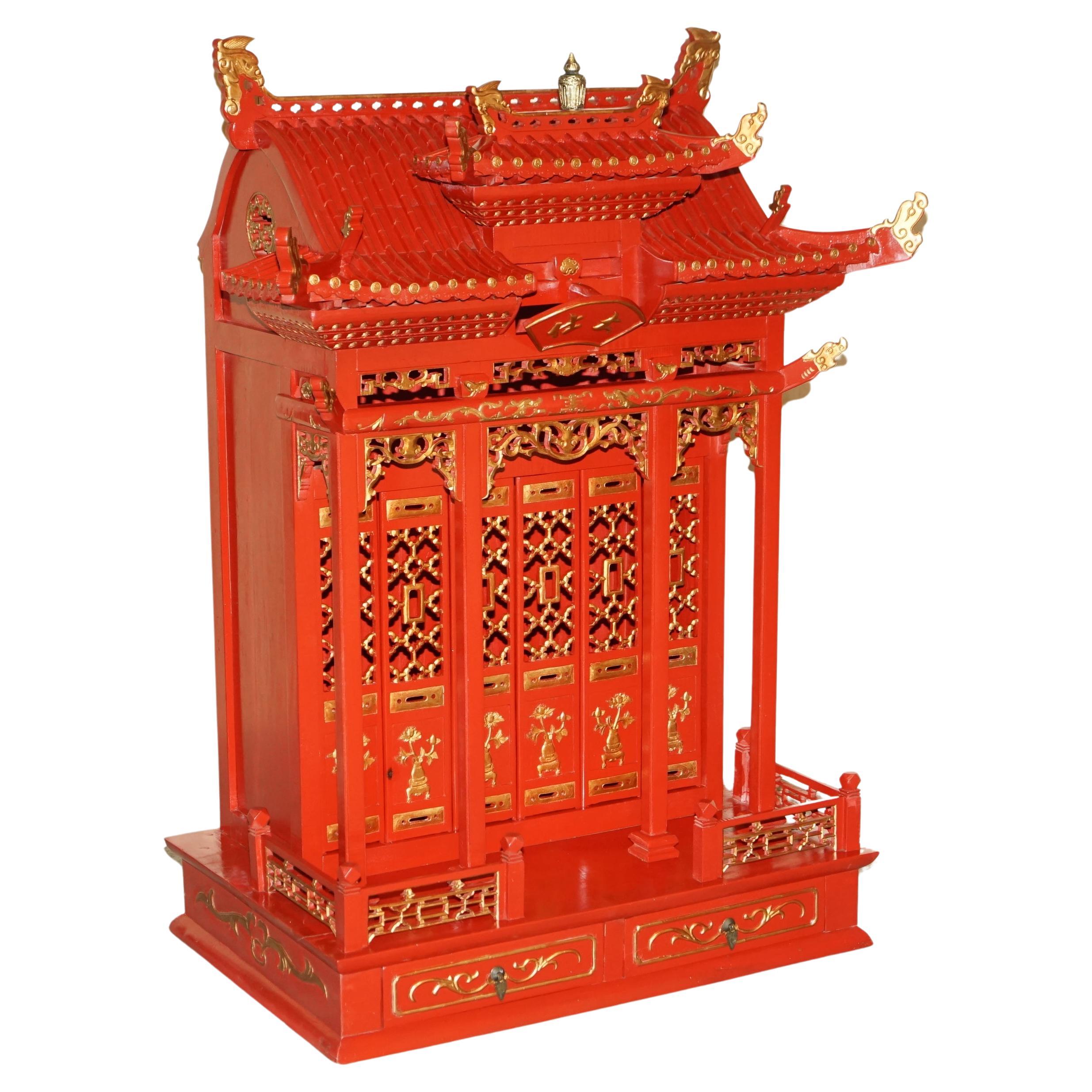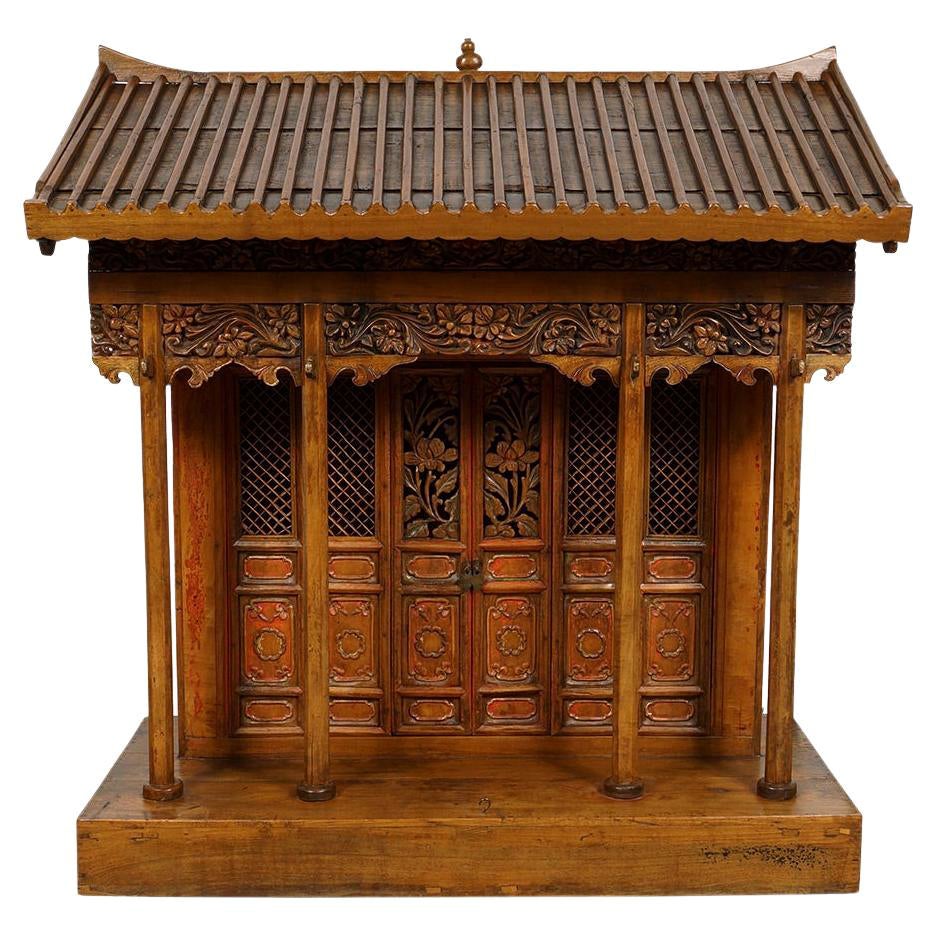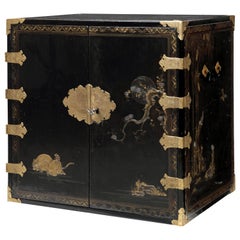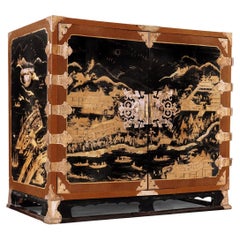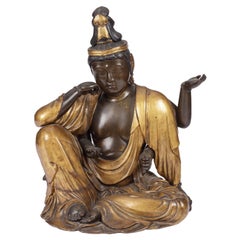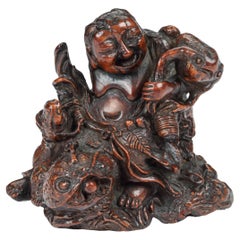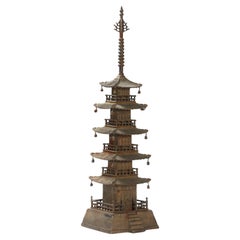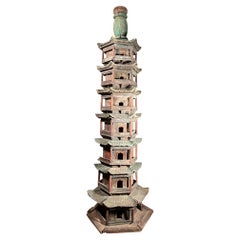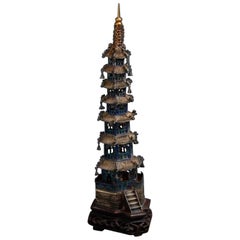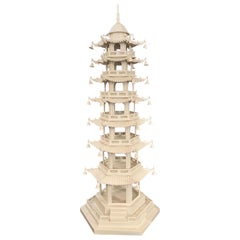Items Similar to Fabulous Lacquer Pagoda Chinoiserie Sculpture with Original Wooden Box
Want more images or videos?
Request additional images or videos from the seller
1 of 8
Fabulous Lacquer Pagoda Chinoiserie Sculpture with Original Wooden Box
$4,676.80
£3,479.07
€3,900
CA$6,404.14
A$7,120.53
CHF 3,717.95
MX$86,674.16
NOK 47,439.38
SEK 44,448.43
DKK 29,688.55
Shipping
Retrieving quote...The 1stDibs Promise:
Authenticity Guarantee,
Money-Back Guarantee,
24-Hour Cancellation
About the Item
Wajima lacquer model of a five story-pagoda by the contemporary lacquer master Miyasaki Masahiro.
In the original signed box, including a wooden display label.
Size: H. 116 cm.
- Dimensions:Height: 46.07 in (117 cm)Width: 13.78 in (35 cm)Depth: 13.78 in (35 cm)
- Style:Showa (Of the Period)
- Materials and Techniques:
- Place of Origin:
- Period:
- Date of Manufacture:1989
- Condition:Wear consistent with age and use.
- Seller Location:Amsterdam, NL
- Reference Number:1stDibs: LU5458222085802
About the Seller
5.0
Recognized Seller
These prestigious sellers are industry leaders and represent the highest echelon for item quality and design.
Established in 1985
1stDibs seller since 2020
23 sales on 1stDibs
Typical response time: 2 hours
- ShippingRetrieving quote...Shipping from: Amsterdam, Netherlands
- Return Policy
Authenticity Guarantee
In the unlikely event there’s an issue with an item’s authenticity, contact us within 1 year for a full refund. DetailsMoney-Back Guarantee
If your item is not as described, is damaged in transit, or does not arrive, contact us within 7 days for a full refund. Details24-Hour Cancellation
You have a 24-hour grace period in which to reconsider your purchase, with no questions asked.Vetted Professional Sellers
Our world-class sellers must adhere to strict standards for service and quality, maintaining the integrity of our listings.Price-Match Guarantee
If you find that a seller listed the same item for a lower price elsewhere, we’ll match it.Trusted Global Delivery
Our best-in-class carrier network provides specialized shipping options worldwide, including custom delivery.More From This Seller
View AllRare Charming 17th Century Japanese Lacquer Cabinet with Gilt-Bronze Mounts
Located in Amsterdam, NL
A fine Japanese pictoral style lacquer cabinet with gilt-metal mounts
Kyoto, Edo period, 1670-1690
Decorated in Japanese relief lacquer work, black lacquer ground decorated...
Category
Antique Late 17th Century Japanese Furniture
Materials
Bronze
$44,930 Sale Price
25% Off
Free Shipping
17th Century Japanese Export Lacquer Cabinet with Depiction the Dutch Tradepost
Located in Amsterdam, NL
A highly important Japanese export lacquer cabinet with depiction of the Dutch East India Company tradepost Deshima and the annual Dutch delegation on its way to the Shogun in Edo
Edo period, circa 1660-1680
H. 88 x W. 100.5 x D. 54 cm
This cabinet includes a later European japanned stand, but also a modern powder-coated steel frame.
The latter can be designed and added to your specific needs.
The sides and front of the rectangular two-door cabinet are embellished in gold and silver hiramaki-e and takamaki-e on a black roiro lacquer ground with a continuous design. The two doors depict a long procession of numerous figures travelling on foot and horseback along buildings and a pagoda into a mountainous landscape. This is the annual court journey, Hofreis, of the Dutch from Nagasaki to the Shogun’s court in Edo. Three horseback riders are dressed as Dutch merchants and a fourth figure, probably het Opperhoofd, is seen inside a palanquin, norimon. Just about to cross the bridge, two men are carrying a cabinet like the present one.
Many Japanese figures on either side of the procession are engaged in various activities; some play musical instruments on board of small boats, others are fishing; figures inside buildings are depicted playing go, and farmers are tending to their rice paddocks. The upper part of the right door shows a large mansion, probably the local daimyo’s castle, with men kneeling before a man in the central courtyard.
The court journey fits in with the foreign policy of the shogunate which accorded a role to the VOC alongside China, Korea, and the Ryukyu Islands who also had to pay tribute. However, the VOC employees were traders, having low status in Japan’s social hierarchy, and they were received with less deference than were the state embassies from Korea and the Ryukyu Islands. Nevertheless, the contacts with the Dutch were a welcome source of information to the Shogun about Europe and European science and technology.
The left side of the cabinet depicts, in mirror image, a rare view of the artificial fan-shaped Deshima Island, the trading post for the Dutch in Japan. The island, where the Dutch flag flies, is surrounded by small Japanese boats and an anchored three-masted fluyt (cargo ship), flying Dutch flags, with on the stern the VOC monogram. On the bottom right a busy street of Nagasaki is shown, bordered by shops and leading up to the stone bridge. On the island the trees are beautifully painted, two cows can be seen, and the flagpole, all in very fine detail. Dutchmen and enslaved Malay are visible outside the buildings and two Japanese figures, probably guards, sit in a small hut in the centre.
A maximum of fifteen to twenty Dutchmen lived on the island at any time and soldiers or women were not allowed. Restrictions on Deshima were tight, and the merchants were only allowed to leave the island by special permission. The Opperhoofd had to be replaced every year, and each new Opperhoofd had to make a court journey to pay tribute, present gifts, and to obtain permission to Margaret Barclay eep on trading. In the distance, many birds fly above the hills and a four-story pagoda can be seen. The right side of the cabinet is painted with other horse riders and their retinue journeying through mountains.
The pair of doors to the front open to reveal ten rectangular drawers. The drawers are decorated with scenes of birds in flight and landscapes with trees and plants. The reverse of the left door with two thatched buildings, one with a ladder, underneath a camelia tree with large blooms; the right door with a three-story pagoda nestled among trees and both doors with a flying phoenix, ho-oo bird. The cabinet, with elaborately engraved gilt copper mounts, hinges, lock plates and brass handles, is raised on an 18th-century English japanned wood stand.
A pair of large cabinets...
Category
Antique 17th Century Japanese Edo Lacquer
Materials
Copper, Gold
$1,497,679
Free Shipping
A superb Japanese giltwood sculpture of Kannon Bosatzu
Located in Amsterdam, NL
A Japanese giltwood sculpture of Kannon Bosatzu
Japan, Edo period, Early 19th century
H. 50 X W. 58.3 cm
Provenance:
- The Somerwil Collection of ...
Category
Antique Early 19th Century Japanese Edo Sculptures and Carvings
Materials
Giltwood
A Japanese rootwood sculpture of Gama Sennin
Located in Amsterdam, NL
Edo period, 18th century
H. 11 x W. 15 cm
Sennin’s are ascetics living as hermits in the mountains, ascribed with magic powers. This Sennin is sitting between rocks on a huge grim-...
Category
Antique 18th Century Japanese Sculptures and Carvings
Materials
Wood
Fine Japanese Namban Lacquer Jewelry Casket, 17th Century
Located in Amsterdam, NL
Japanese Namban lacquer transition-style coffer with two drawers
Kyoto/Nagasaki, circa 1650
The cartouches with gilt and red decorations of leaves...
Category
Antique 17th Century Japanese Edo Lacquer
Materials
Cypress
Unique 17th Century Miniature Japanese Namban Lacquer Miniature Dollhouse Chest
Located in Amsterdam, NL
A unique and exceptional Japanese miniature or dollhouse export lacquered chest
Kyoto, circa 1620-1640
The chest of rectangular shape with a domed lid, decorated in Transition-style, in gold hiramaki-e on a black background within reserved lobed cartouches decorated with landscapes animated with birds and rabbits, on a shagreen or samegawa background. The borders are decorated with geometric friezes, the box with gilt-copper mounts, the interior decorated in red lacquer.
Measures: H 9.2 x W 14.5 x D 7.2 cm
This miniature is of exceptional quality and a perfect copy of the famous large size Transition-style coffers. It was most likely ordered by a Dutch lady for her dollhouse (poppenhuis), like the famous Petronella Oortman (1656-1716) doll-house, which is now one of the highlights in the collection of the Rijksmuseum Amsterdam, or Petronella Oortmans-de la Court’s (1624-1707) dollhouse in the collection of the Centraal Museum Utrecht. Sara Rothé of Amsterdam in 1743 ordered a miniature black lacquered ivory tripod table with gold chinoiserie decoration by Jurriaan Buttner (Monika Kopplin, European Lacquer, 2010, p. 56).
Other Japanned dollhouse...
Category
Antique 17th Century Japanese Edo Lacquer
Materials
Shagreen, Cypress
You May Also Like
Gojunoto Japanese Metal Pagoda
Located in Vienna, AT
Five-story Japanese pagoda "Gojūnotō" made of painted patinated metal.
Category
Mid-20th Century Japanese Japonisme Metalwork
Materials
Copper, Iron
Chinese Antique Monumental Buddhist Wooden Pagoda Tower, 70 Inches
Located in South Burlington, VT
China antique monumental Wooden Pagoda, total height is 70 inches, hand carved and hand painted wood, seven hexagonal sections plus finial, late Qin...
Category
Early 20th Century Chinese Qing Sculptures and Carvings
Materials
Wood
19th Century Chinese Sterling Silver Pagoda
Located in Brea, CA
19th century Chinese pagoda. Sterling silver sculpture and golden sterling silver filigree, decorated with poly chrome enamels. Not marked. Cast wood base. Failures and minor defects...
Category
Antique Late 19th Century Chinese Antiquities
Materials
Sterling Silver
Large-Scale Chinoiserie Pagoda, Seven-Tier, White Painted Tôle
Located in Montreal, Quebec
Large-scale chinoiserie pagoda, seven-tier, white painted tôle
Vintage large-scale white metal (tôle) pagoda. Rare and stunning scale and detailing, including little bells on each tier. Each level graduates from 10" at the bottom level to 6" at the top level. It is an impressive piece, whimsical and charming, and very very chic. Can be easily dismantled in tiers for shipping.
Chinoiserie-inspired decoration has entranced generations of discerning collectors from 18th-Century France to Hollywood Regency. The architectural and columnar shape of this piece frames a space.
Probable prior provenance: John Rosselli Antiques.
Category
20th Century American Chinoiserie Metalwork
Materials
Metal
Rare Oriental Chinese Export Vintage Pagoda Top Red Cabinet Very Decorative
Located in West Sussex, Pulborough
We are delighted to offer for sale this lovely large vintage circa 1930's hand painted and lacquered Chinese Pagoda top cabinet
A very good look...
Category
Vintage 1930s Chinese Chinese Export Furniture
Materials
Wood
19th Century Antique Chinese Wooden Carved Altar/Buddha House/Shrine
Located in Pomona, CA
Size: 43in H x 38in W x 18 1/2in D
two door opening: 20in H x 8 1/2in W
four door opening: 20in H x 17in W
Origin: Shan Xi, China
Circa: 1900 - 1920
Material: Wood
Condition: Solid wood construction, sturdy, hand carved, well balanced. Normal age wear
This gorgeous Antique Chinese Carved Altar/Buddha Shine is 100% hand made and hand carved from Cypress wood. It has over 150 years history and made in imitation of a real Buddhist temple, even has a scaled down version of the real roof. It has beautiful hand carving works of Chinese traditional folks art, Buddhist floral on the door panels and top. There are 6 panels door on the front that can be opened/removed by two, four or even all six panels let you pray Buddha...
Category
Early 20th Century Chinese Chinese Export Furniture
Materials
Cypress
More Ways To Browse
Chinoiserie Black Lacquer Furniture
Chinoiserie Black Lacquer
Vintage Japanese Lacquer
Japanese Pagoda
Pagoda Display
Pagoda Sculpture
Pagoda Box
Vintage Japanese Lacquer Box
Vintage Lacquer
Black Lacquer Chinoiserie Boxes
Pagoda Model
Japanese Pagoda Sculpture
Wajima Lacquer
Black Lacquer With Gold Art
Japanese 19th Century Lacquer
Tray Japan
Japanese Red Lacquered
Japanese Lacquer Meiji
